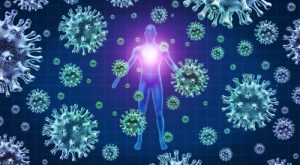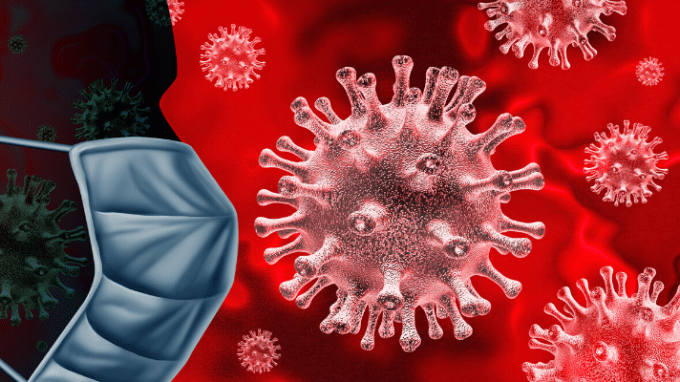One year into the SARS-CoV-2 (COVID-19) pandemic, and researchers continue their research to identify potential links between the coronavirus and men and women’s fertility.
COVID-19 Overview
Coronaviruses are a family of pathogens that live inside the bodies of many people. In most instances, these microbes either do not cause illness or are responsible for minor upper respiratory issues like the common cold. However, every so often a potentially more harmful strain develops as is the case with the current pandemic-causing novel COVID-19 that has produced hundreds of thousands of cases worldwide and has precipitated drastic actions amongst many world governments designed to ebb its rapid spread.
Unfortunately, the virus is very easy to transmit. This microbe can be ingested when expelled into the air by an infected individual sneezing, coughing, talking or breathing. Moreover, while the potential spread risk is low, there have also been a few reported cases of this virus spreading through potential contaminated surfaces.
The COVID-19 virus can impact any age group regardless of preexisting conditions, health status, and gender. Those most at risk of suffering potentially serious illness, long-term side effects and death are young people with underdeveloped immune systems, those with compromised immune systems and the elderly population.
In many cases, the virus elicits common symptoms such as loss of taste and smell, headache, shortness of breath, body aches, and fatigue and some symptoms similar to those seen in common upper respiratory infections like the flu and common cold, including coughing, congestion, wheezing and malaise. However, in severe manifestations, the ailment might progress into more serious medical problems like pneumonia, respiratory failure, and even death.
As prolifically spreading and as virulent as the virus might be, certain preventative actions might stop individuals from contracting it. Seemingly every healthcare professional and infectious disease expert stand in agreement that the most efficient preventative measure is vaccination and mask wearing.
Other potential precautions include remaining home when feeling sick, social distancing to contain the microbe’s progression, and routine handwashing with soap and warm water for a minimum of 20 seconds. Practicing optimal lifestyle habits, such as consuming a healthy diet, limiting stress wherever possible, getting enough exercise and obtaining adequate quantities of sleep are also encouraged to maintain top immune system function.
Should someone test positive for the virus, the most immediate concern is preventing its spread to other parties and this virus can spread with or without symptoms present. Because the virus has no specific cure, the infected individual and those within close contact should self-quarantine for a period of 7 -14 days, increase fluid intake and regular care to let the virus run its course. However, if more severe manifestations of the illness are present, individuals should seek immediate medical attention.
COVID-19 and Fertility
Research has 
When it comes to the epidemiology of COVID-19 infection, the frequency of infection among men and their fatality rates has been found to be considerably higher than those recorded for women, 51 percent – 66.7 percent of cases being men in China, and 58 percent – 70 percent of cases being men in Italy. While this discrepancy may be due to factors such as preexisting conditions, behavioral risk factors, etc., from a biological perspective, research finds that women can produce higher levels of circulating antibodies and manifest robust immune responses against different pathogens, more so than men, leading studies to look into gender roles and biological factors when it comes to infection and long-term complications.
Initially, medical professionals in China, which is where COVID-19 originated, claimed that there was a potentially serious link between coronavirus and fertility levels. These preliminary findings suggested that the pathogen could precipitate testicular damage and might also impact sperm quality. However, after these initial reports circled, these scientists retracted their beliefs.
More than a year later since the onset of the pandemic however, these findings have been found relatively true in multiple studies.
One Florida study found that 50 percent of male patients who died due to COVID-19 had a reduced ability to produce sperm, and 17 percent showed testicular inflammation. The researchers also found scrotal congestion and inflammation, red blood cells in the epididymis tube and testes, significant amounts of dead sperm cells, and weak seminiferous tubules (the site within the testes, where spermatogenesis occurs and germ cells develop into sperm.)
With additional research still underway, direct and indirect evidence from current studies suggest that COVID-19 may be able to impair female fertility through ACE2 targeting and negatively impact follicular development and ovulation, regulation of the corpus luteum angiogenesis and degeneration, and affect endometrial tissue growth.
While the long-term fertility impact from COVID-19 infection is still underway, studies have found that women with PCOS are at an increased risk for contracting the virus.
Research is still ongoing in regards to examining the impact the coronavirus might have on egg health or quality. According to the CDC, pregnant women are likely at a greater risk for severe illness and long-term symptoms related to COVID-19.
In terms of COVID-19 symptoms and potential birth outcomes, a systematic review released in February 2021, monitored 136 COVID-19 cases of infected pregnant women and found that of these 136 cases, 63 percent of women experienced fever and 76 percent of the women delivered via cesarean (as a comparison point, as of 2017 the average C-section rate in America was 32 percent, according to the CDC).
Additional research is underway to determine if possible transmission from COVID-19-positive mothers to newborns is possible. It is found that ACE2 in the placenta is greater than that in the lung, which can have severe damage due to COVID-19, suggesting that the placenta could be an organ through which COVID-19 viral infection occurs. The same could be expected for all reproductive organs expressing ACE2, leading to many reproductive dysfunctions and reproductive infertility. Research is also looking into the correlation of the presence of antibodies in an infant born to a COVID-19-positive mother and the role vaccination plays as well.
Those Undergoing Fertility Treatments
To date, researchers do believe that undergoing some form of assisted reproductive technology (ART), need to be postponed until after the COVID-19 pandemic has subsided.
Although there is no evidence that the virus might have negative effects on IVF outcomes or other fertility therapies, some specialists and many couples have opted to pause fertility treatments in order to support healthcare system resources and avoid placing additional stress and concerns on couples undergoing procedures.
Vaccination and Prevention
Even one year into the global pandemic, there is still a lot that we don’t yet know about COVID-19 and the number of current and potential variants and their effects on male and female fertility, but the correlation between infection with COVID-19 and health and infertility risk factors is apparent. Ultimately the results of current studies have shown the significance of taking the right precautions to avoid COVID-19 infection. That said, all individuals, whether looking to conceive or not, are encouraged to get one of the many COVID-19 vaccines currently available, as findings indicate that a COVID-19 vaccine poses no threat to fertility, unlike contracting the virus itself, which has been found to potentially reduce fertility or hinder reproductive health.
Furthermore, for women, recent studies have indicated that antibodies from the vaccine appear to be capable of traveling through the placenta, thus giving babies an increased immunity to COVID-19.
While the COVID-19 virus continues to spread world-wide, and research continues to study the long-term health and fertility impacts of the infection, it is essential to limit the significant impact infection has been found to produce within the body through proper vaccination and continued social distancing and mask wearing.




